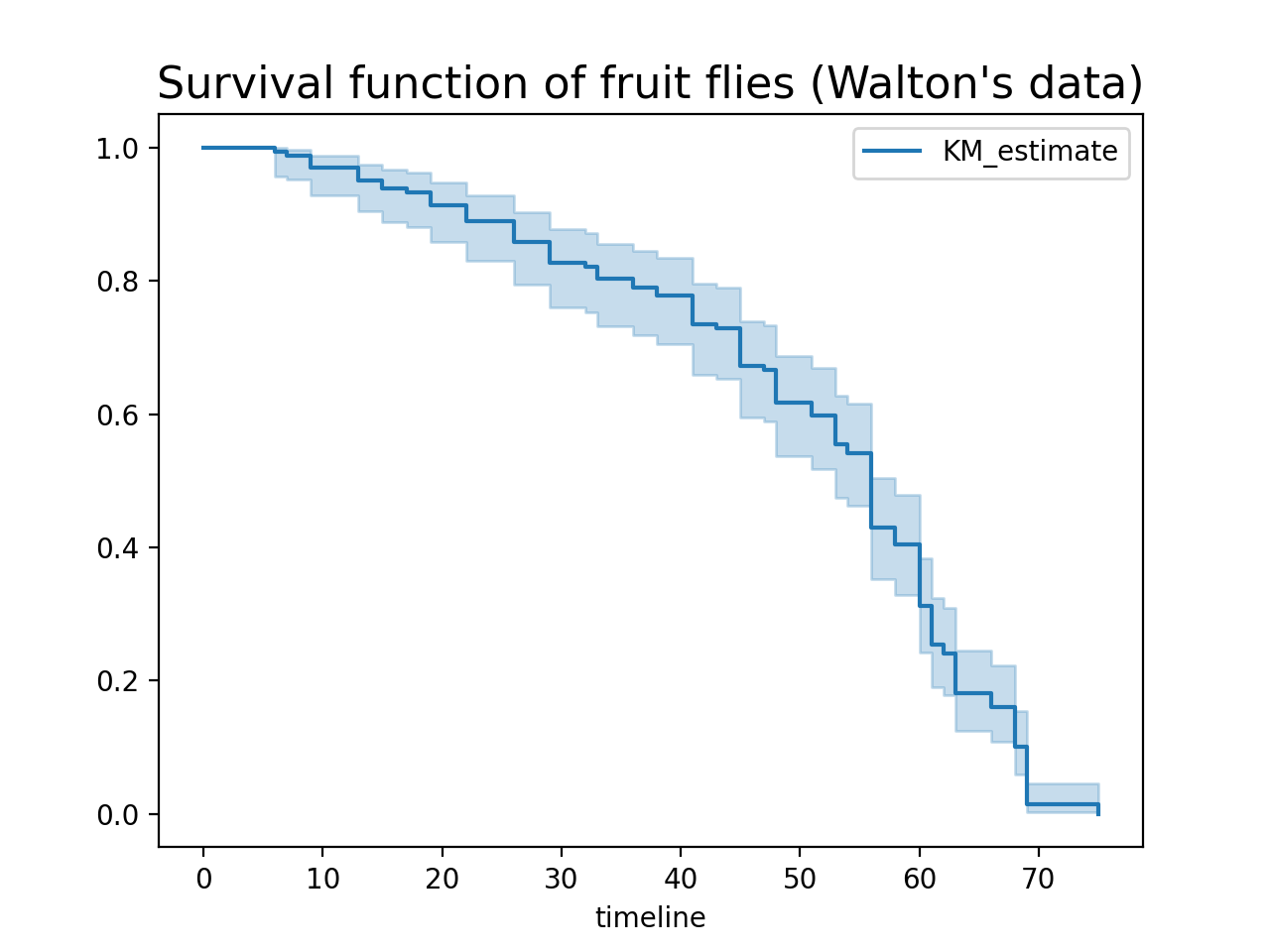Federated Survival Analysis with Flower and KaplanMeierFitter¶
This is an introductory example of federated survival analysis using Flower and lifelines library.
The aim of this example is to estimate the survival function using the Kaplan-Meier Estimate implemented in lifelines library (see KaplanMeierFitter). The distributed/federated aspect of this example is the data sending to the server. You can think of it as a federated analytics example. However, it’s worth noting that this procedure violates privacy since the raw data is exchanged.
Finally, many other estimators beyond KaplanMeierFitter can be used: AalenJohansenFitter, GeneralizedGammaFitter, LogLogisticFitter, SplineFitter, and WeibullFitter.
We also use the NatualPartitioner from Flower Datasets to divide the data according to the group it comes from therefore to simulate the division that might occur.

Set up the project¶
Clone the project¶
Start by cloning the example project:
$ git clone --depth=1 https://github.com/adap/flower.git _tmp \
&& mv _tmp/examples/federated-kaplan-meier-fitter . \
&& rm -rf _tmp \
&& cd federated-kaplan-meier-fitter
This will create a new directory called federated-kaplan-meier-fitter with the following structure:
federated-kaplan-meier-fitter
├── examplefmk
│ ├── __init__.py
│ ├── client_app.py # Defines your ClientApp
│ ├── server_app.py # Defines your ServerApp
│ └── task.py # Defines your model, training and data loading
├── pyproject.toml # Project metadata like dependencies and configs
└── README.md
Install dependencies and project¶
Install the dependencies defined in pyproject.toml as well as the examplefmk package.
pip install -e .
Run the project¶
You can run your Flower project in both simulation and deployment mode without making changes to the code. If you are starting with Flower, we recommend you using the simulation mode as it requires fewer components to be launched manually. By default, flwr run will make use of the Simulation Engine.
Run with the Simulation Engine¶
flwr run .
You can also override some of the settings for your ClientApp and ServerApp defined in pyproject.toml. For example:
flwr run . --run-config "num-server-rounds=5"
You can also check that the results match the centralized version.
$ python3 centralized.py
Run with the Deployment Engine¶
Follow this how-to guide to run the same app in this example but with Flower’s Deployment Engine. After that, you might be intersted in setting up secure TLS-enabled communications and SuperNode authentication in your federation.
If you are already familiar with how the Deployment Engine works, you may want to learn how to run it using Docker. Check out the Flower with Docker documentation.
